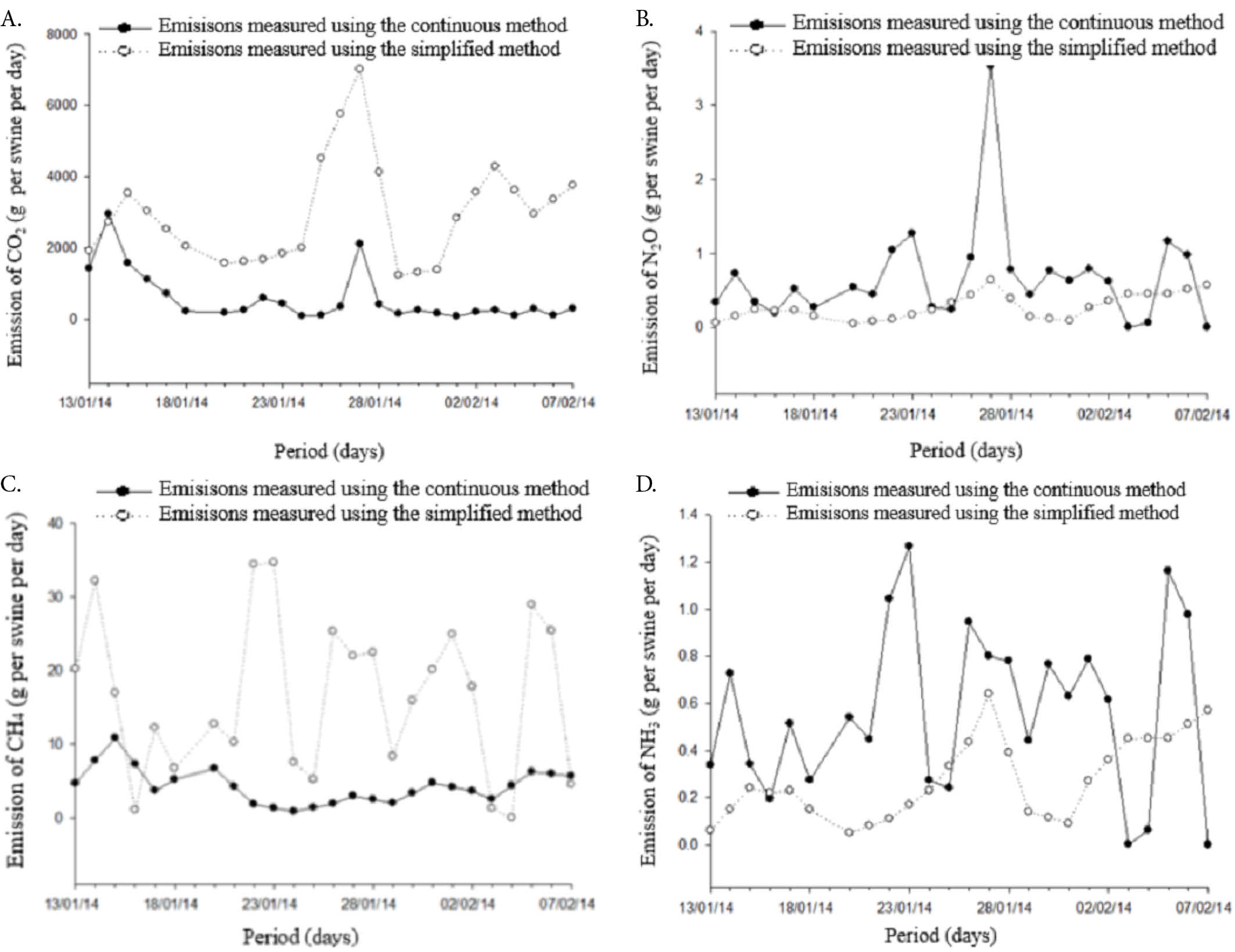HIGHLIGHTS:
The emission of greenhouse gases in swine farms contributes to global warming.
The method used for quantification of greenhouse gas emissions from swine farming must be accurate and adapted to Brazil.
The simplified method is reliable and can replace the conventional continuous method.
ABSTRACT
Swine production systems contribute to emission of greenhouse gases (CO2, N2O, and CH4) and ammonia (NH3) into the atmosphere. Therefore, the objective of this study was to evaluate methods for determining the emissions of ammonia and greenhouse gases (GHG) in a commercial swine production unit with natural ventilation during the finishing phase. The concentrations of gases in the air were measured using a gas analyzer (INNOVA 1412), and the flow emission was calculated by considering the ventilation rate and the differences in gas concentration between the interior and exterior of the installation. The results showed that the emission flow obtained via the simplified method in [g per swine h-1] was 2.689, 0.30, 4.39, 13.55, and 3.273 for CO2, N2O, CH4, NH3, and water vapor, respectively. The flow obtained using the continuous method in [g per swine h-1] was 574, 0.67, 19.50, 5.84, and 7.2 for CO2, N2O, CH4, NH3, and water vapor, respectively. The proposed simplified method was highly accurate for estimating GHG emissions from swine production systems with natural ventilation.
Key words:
swine farm; methane; ammonia; environment; global warming

 Thumbnail
Thumbnail
